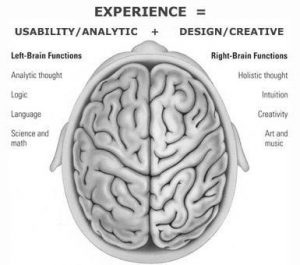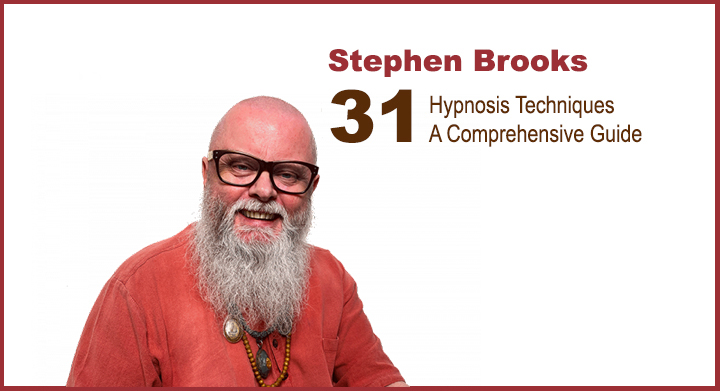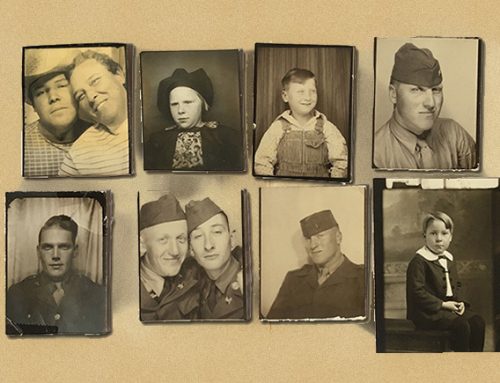Hypnotic Inductions
The first step of hypnosis, a hypnotic induction is the process that a hypnotist uses to put the client into a state where they are more open to suggestion (known as trance). There are many types of inductions.
-
Relaxation technique
Why do therapists ask to “make yourself comfortable” and provide a cushy leather couch to lay down on? It’s more than a common courtesy. Relaxation is a common method used by therapists and a beginner hypnosis technique. If the client is relaxed, they may fall into trance and the mind is open to suggestion. They are more likely to talk to you and be open to indirect suggestions. Here are some common methods of relaxation:
- Make yourself comfortable
- Lay down
- Count down in your head
- Controlled breathing
- Relax & tense muscles
- Speak in a soft tone
-
Handshake technique
 Milton Erickson – the father of hypnotherapy – is famous for using the handshake technique as a way to induce hypnotic trance. Handshakes are the most common form of greetings in our society. The handshake technique shocks the subconscious by disrupting this common social norm. Instead of shaking the hand normally, the hypnotist would interrupt the pattern that our mind has established by grabbing the wrist or pulling the subject forward and off balance. With the pattern interrupted, the subconscious mind is suddenly open to suggestion.
Milton Erickson – the father of hypnotherapy – is famous for using the handshake technique as a way to induce hypnotic trance. Handshakes are the most common form of greetings in our society. The handshake technique shocks the subconscious by disrupting this common social norm. Instead of shaking the hand normally, the hypnotist would interrupt the pattern that our mind has established by grabbing the wrist or pulling the subject forward and off balance. With the pattern interrupted, the subconscious mind is suddenly open to suggestion.
-
Eye Cues
There are two spheres of the brain – the right manages the more “creative” and conscious side and the left the “practical” and subconscious. In any conversation we look for feedback from the listener to see how they react to our statements. Watch the subject’s eyes. Are they looking to the right, accessing the conscious or the left to the subconscious? Are they fixated on one object in the room? If they are accessing the subconscious, you can make a suggestion that they are not consciously aware of.
Advanced Tip: Insertive Eye Contact
Reading the eye movements of a listener is a common use case. But did you know that as the speaker, you can also perform a hypnotic induction on the the listener with your eye movements? This new technique was developed and tested by Stephen Brooks.
Watch this video on insertive eye contact to learn how.
-
Visualization
 Visualization can be used both to induce trance and to make suggestions. For example, ask your subject to recall a room they are very familiar with. Imagine every detail in that room: the floor, the shape of the windows, the painting on the wall, the smell, the light. Then, move onto a room they are less familiar with. As they struggle to recall the exact details they open the mind to suggestion.
Visualization can be used both to induce trance and to make suggestions. For example, ask your subject to recall a room they are very familiar with. Imagine every detail in that room: the floor, the shape of the windows, the painting on the wall, the smell, the light. Then, move onto a room they are less familiar with. As they struggle to recall the exact details they open the mind to suggestion.
Advanced Tip: Use visualization to recall positive memories and associate them with a rewarding behavior, or to change one’s perception of a negative image.
- Positive images and experiences (wedding, kid, birthday, graduation)
- Discard bad images (maybe throw them in the trash)
-
Arm “Levitation” Technique
With this classic Ericksonian technique, the client begins by closing their eyes. They are asked to notice the difference in feeling between their arms. The hypnotherapist makes suggestions as to the sensations in each arm. For example they might say the arm feels heavy or light, hot or cold. The client enters a trance and may physically lift their arm or they make simply believe in their mind that they have lifted the arm. Either way, the induction was successful.
Advanced Tip: How To Hypnotize A Client With Arm Levitation
-
Sudden Shock/Falling backwards
Proceed with caution! Similar to the handshake technique, a subject finding themselves shocked can enter into a trance. I would never advocate causing any physical pain to a subject, but Erickson once demonstrated this by stepping on a woman’s foot and following it with a suggestion. A milder version would be the “trust falls” that you may have heard of or participated in at a team building event. The sensation of falling backwards shocks the system and opens the mind to suggestion, however, one must be certain they will not drop the subject.
-
Eye Fixation
 Have you ever found yourself “zoning out” and staring at an interesting item in the room while someone is talking? Did you completely miss what they’ve said? You may have been in a trance.
Have you ever found yourself “zoning out” and staring at an interesting item in the room while someone is talking? Did you completely miss what they’ve said? You may have been in a trance.
Any object of focus can be used to induce trance. The most famous examples are the “power pendulum” or a “swinging pocket watch” – although these two objects are now associated with hokey stage hypnosis. You’re more likely to fail and encounter resistance using these objects, due to their reputation.
Nonetheless, there are two secrets behind eye fixation. First, the object keeps the conscious mind occupied, opening the subconscious to suggestion. Secondly, your eyes get physically tired when they fixate or move back and forth.
Example: Try looking up at ceiling for a few minutes (without bending your neck). The eyes naturally tire and begin to close.
-
Bodyscan
A popular method for self-hypnosis. Starting at the top of the body with your eyes closed, scan down slowly from the head to the feet. Notice every sensation – your breath expanding the ribcage, chair on your back, the pain in your elbow, each finger extended, the feet on the ground. Repeat the process from bottom to top. Continue scanning up and down until you enter trance.
Advanced Tip: The body scan can be stacked with other hypnosis induction techniques such as countdown breathing and relaxation to increase effectiveness.
-
Countdown Breathing
You may have heard of controlled breathing for meditation, but it can also an easy form of self-hypnosis. Here’s how it works:
- Close your eyes and sit upright in a chair, arms on your lap.
- Breathe deep through the nose and out through the mouth.
- Using slow controlled breaths, countdown from 100.
- Each exhale counts as one interval.
- At the end you may be in a trance. If not continue the exercise counting down from a higher number.
Stephen Brooks live Streaming Interactive Online Diploma in Compassionate Ericksonian Hypnotherapy. Accredited Practitioner Diploma Training for students wishing to qualify as hypnotherapists and be registered to offer hypnotherapy to clients / patients. ENROLING NOW
Hypnotic Suggestions
A suggestion is the desired behavior to be performed by the client. Post-hypnotic suggestions are delivered after a hypnotized person enters trance – a state in which they are more open to influence. There are two schools of thought for suggestions.
-
Indirect Suggestion
Erickson was a champion of indirect suggestion. It is a favorite of certified hypnotherapists because this method puts the control in the subject’s hands rather than those of authoritarian – respecting the patient’s boundaries and clinical ethics. Further it has proven more effective for subjects that are resistant or skeptical of trance. Rather than “order” a subject to relax (direct suggestion), one could say:
“You might wish to close your eyes, when you are comfortable.”
Learn more about Ericksonian Hypnosis
-
Direct Suggestion
In conversational hypnosis, a direct suggestion is an explicit command to perform a certain action. Though powerful, it is sometimes viewed as unethical because as the authority (a doctor or hypnotist) you hold power over the client. The client does not control the decision to change behavior with this method. The Stanford Prison Experiment was an infamous example of using authority, obedience, and direct suggestions to manipulate subjects.
Here are some classic direct suggestions:
- “You will go to sleep”
- “You will stop smoking”
- “You will lose weight”
-
Voice Tone
The tone of your voice is particularly useful when making suggestions. This can double up with other techniques (like relaxation).
“You might wish to become relaxed”
In the above example, the word “relaxed” is spoken softly and elongated. On the contrary, you can make a direct suggestion loudly.
“You will STOP smoking!”
Another perfect pair for voice tone is the confusion technique. The therapist could vary the tone of voice from whispering to shouting, speak with a different accent, or use a lisp, to confuse the subject.
-
Hypnotic trigger
 There are many forms of hypnotic triggers. A trigger reminds the subconscious of a desired action or feeling which was suggested under hypnosis. Here are a few examples:
There are many forms of hypnotic triggers. A trigger reminds the subconscious of a desired action or feeling which was suggested under hypnosis. Here are a few examples:
- Opening eyes
- Sound of a bell
- Snap of fingers
- Clap of hands
- Standing up or sitting down
- Opening a door
Here is how a hypnotic trigger could apply to agoraphobia:
“When you open a door, you might see your loving family on the other side.”
Reading Body Language
-
Nonverbal Communication
 Hypnotists are experts at nonverbal communication – from reading a client’s body language to conveying your own non-verbal suggestions. While a client could be saying one thing consciously, the subconscious mind could tell a completely different story. Here are a few examples of how the subconscious might affect body language:
Hypnotists are experts at nonverbal communication – from reading a client’s body language to conveying your own non-verbal suggestions. While a client could be saying one thing consciously, the subconscious mind could tell a completely different story. Here are a few examples of how the subconscious might affect body language:
- Facial expressions
- Body posture
- Voice tone
- Pacing
- Eye movements
- Arms crossed
- Head nods
- Covering face
Advanced Tip: How To Become An Expert In Non-Verbal Communication (with case example)
-
Cold reading
You might have seen psychics, mediums, stage hypnotists, or mentalists perform a “cold reading” on TV for entertainment purposes. Though it’s generally too direct to use with a client, you might use cold reading at a party or a networking event. Here’s how cold reading works. For example, if the subject is not smiling, the hypnotist might ask:
H: “Are you sad?” – Start by asking a general or vague question from observation.
S: “Yes” – If they reply no, reset and ask another vague question.
H: “Has someone left you?” – Drill down and ask a more specific question. This could be a relationship or a pet or a family member.
S: “Yes! How did you know my cat fluffy died?”
-
Warm reading
With a warm reading, you make a statement that could apply to anyone:
“You feel happy when you are surrounded by friends.”
-
Hot reading
The most difficult type, because you need to have some prior knowledge about the person. Let’s say their family member contacted you and told you that the person was involved in a traumatic event. When you meet them, you might focus on using the “regression to a cause” technique because you have prior knowledge about the past event.
Triggers & Advanced Hypnotherapy Techniques
-
The Swish Pattern
Submodalities can be used in “the swish pattern” – a neuro-linguistic programming technique used to associate or dissociate the client with certain behaviors. The five senses are considered modalities (taste, smell, sight, touch, hearing). A submodality is a subset of these senses. Here are some examples of submodalities:

- Bright or dim?
- Large or small?
- Color or black and white?
- Loud or soft sounds?
The Swish Pattern begins with a visualization. Once the client is in a trance the hypnotist identifies one or two submodalities (brightness, size, etc). The undesirable action is large, focused, and bright in the foreground, while the desired action is visualized as small and dim in the background. In the time it takes you to say “Swish” (the method’s namesake) the desired image rapidly becomes bright and large in the client’s mind.
-
Misdirection
We see misdirection used in the real world, sometimes on a daily basis – from politics to entertainment. The prefix “mis” means wrong and “direction” is attached to it, meaning the audience is being lead in the wrong direction. There are two types of misdirection – one is literal and the other is of the mind.
A familiar demonstration of the first would be a magician distracting people by waving a wand in his left hand and then performing a sleight of hand with his right. While the audience is misdirected, the magician sneaks a card up his sleeve giving the illusion that it has “disappeared”.
 Misdirection can also be a visualization:
Misdirection can also be a visualization:
“As you become anxious, imagine you are relaxing on a beach”
Here, a subject dealing with anxiety is misdirected to the visualization of themselves on a beach. The hypnotist has directed them from an unpleasant image towards a pleasant one.
-
Reframing
Usually done as a metaphor, reframing allows you to change the perception of an experience in the client’s mind. For example, imagine you have a client that wants to lose weight. They stay inside and play video games all day. You could ask them to describe the process to “level up” their character in the video game – what they do, how long it takes, how strong the character is at the beginning. And then, “reframe” the process of losing weight in their mind by comparing it to the video game.
“Losing weight is like leveling up your character in a video game. You start slow and train every day. You don’t see much difference at the beginning, but over time your ‘character’ becomes stronger and stronger.”
-
Regression to cause
First the client enters a deep trance where they can experience events as if they were actually there (also known as somnambulism). The therapist uses visualization to create an “affect bridge” where the client experiences an event for the first time again. Once the cause is identified the hypnotherapist can make suggestions and reframe the situation.
-
Future Pacing
 The opposite of regression, when a subject is asked to visualize themselves taking the proper actions and behaviors in the future. Rather than look back into the past for an underlying negative event, you look forward to an event with positive emotions.
The opposite of regression, when a subject is asked to visualize themselves taking the proper actions and behaviors in the future. Rather than look back into the past for an underlying negative event, you look forward to an event with positive emotions.
“Imagine you are done with your speech and the crowd is cheering. You feel accomplished and relieved.”
-
Anchoring
When we record a memory, all of the senses and emotions are associated. These are “anchors” in your memory. Perhaps the client has anchored the behavior of cigarette smoking with a break, meal, sex, chatting with friends and other pleasurable feelings. The hypnotist can suggest new anchors for more positive behavior.
-
Betty Erickson’s 3-2-1 Technique
Betty Erickson was Milton Erickson’s wife. She developed her own method for self-hypnosis known as the 3-2-1 technique. The procedure starts with your eyes open. You take note of 3 things in the room that you can see, hear, and feel. For example: you might see a painting on the wall, a table, and a clock. You might hear birds outside the window, the hum of a refrigerator, and the clock ticking. You might feel the pressure of the chair on your back, your feet on the floor, and the warmth of the sunlight through the window. The process repeats focusing on 2 items from each sensation, and then 1 item (hence the name 3-2-1). Then, you close your eyes and start over by visualizing 3 objects from each sense in your head. Again you count down. Once you’ve reached the last item, you will be in a trance.
-
Incrementalism
 Making a tiny change is the stepping stone to a much large one. For example, if a client is trying to lose weight, daily cardio may be too big of a leap. Instead, you could suggest they start with a small increment: take the stairs for one floor and then hop in the elevator as they typically would. The next week, two flights of stairs. Eventually, they will have worked up to the larger goal and overall better behavior.
Making a tiny change is the stepping stone to a much large one. For example, if a client is trying to lose weight, daily cardio may be too big of a leap. Instead, you could suggest they start with a small increment: take the stairs for one floor and then hop in the elevator as they typically would. The next week, two flights of stairs. Eventually, they will have worked up to the larger goal and overall better behavior.
Another example: Go to the gym once a week for 5 minutes. The commitment is so small it’s impossible to fail. You will likely end up staying for more than 5 minutes, incrementing the duration and amount of days over the course of a month.
-
Parts Therapy
 In theory, all behavior is positive in some way. The subconscious may justify one negative behavior with a positive one. An agoraphobic may not leave the house because the subconscious aims to protect the body from the dangers of the outside world. A smoker may harm their body physically in order to seek pleasurable conversation with other smokers outside.
In theory, all behavior is positive in some way. The subconscious may justify one negative behavior with a positive one. An agoraphobic may not leave the house because the subconscious aims to protect the body from the dangers of the outside world. A smoker may harm their body physically in order to seek pleasurable conversation with other smokers outside.
The mind is made up of multiple parts. With parts therapy, the hypnotherapist communicates with the behavior part to better understand why an action is being taken. Then they would communicate with the creative part of the mind to come up with another solution. In the example of the smoker, perhaps there is another way they can satisfy the need for social interaction – a book club, a bowling group. The therapist then uses future pacing to reinforce the positive behavior.
-
Metaphor
Metaphors are therapeutic and memorable. Erickson loved to use metaphors in his books and teachings. Here are some classic metaphors:
- Your body is a car. Give it the right fuel and it will perform well. If you neglect the maintenance and fill it with poor fuel, and it will break down.
- Your mind is like a river that is ebbing and flowing. You can stand on the bank of the river and watch it go by or you can try to swim against the current.
- You are a mountain – strong, impenetrable, and tall.
-
Hypnotic Bind
 The hypnotic bind is a favorite amongst parents and presents the “illusion” of choice with an either/or question. Here’s one example:
The hypnotic bind is a favorite amongst parents and presents the “illusion” of choice with an either/or question. Here’s one example:
“Would you like to brush your teeth or take a bath?”
Advanced Tip: Use the double bind to present two options for the same desirable behavior:
“Would you like to go to bed in 10 minutes or 20 minutes?”
Either way, the child is performing the desired action of going to bed.
-
Hypnotic logic
Under trance, a client interprets statements very literally. If you ask the client “Can you sit up” they will respond “Yes”. We call this hypnotic logic.
You can use hypnotic logic along with suggestions like so:
“You can lose weight because you are successful”
Although being successful doesn’t necessarily mean you’re able to lose weight, the statement is taken literally.
-
Affirmations & Positive Thinking
An affirmation confirms a positive thought. For a client with body dysmorphia, you may have them repeat back under trance “I am beautiful” several times.
-
Reconnections
Memories fade over time. While that might be good for someone with a negative experience, positive experiences can also fade.
Abilities, just like memories, can be forgotten as well. An agoraphobic may forget that there was once a time they had the ability to go outdoors.
As a hypnotherapist you can help bring these positive memories and abilities back using rehearsal and visualization with the client.
Bonus: Want even more hypnotherapy techniques, with step-by-step videos? Check out our online hypnosis courses.






